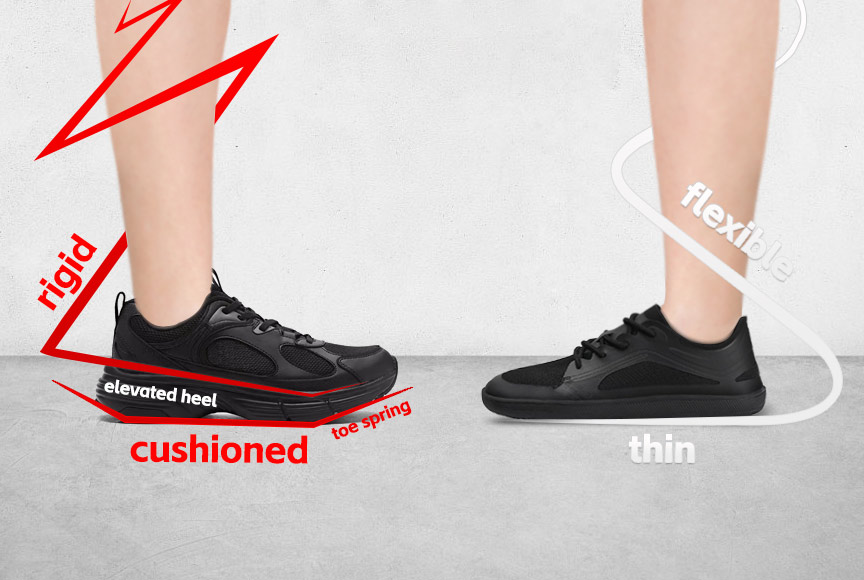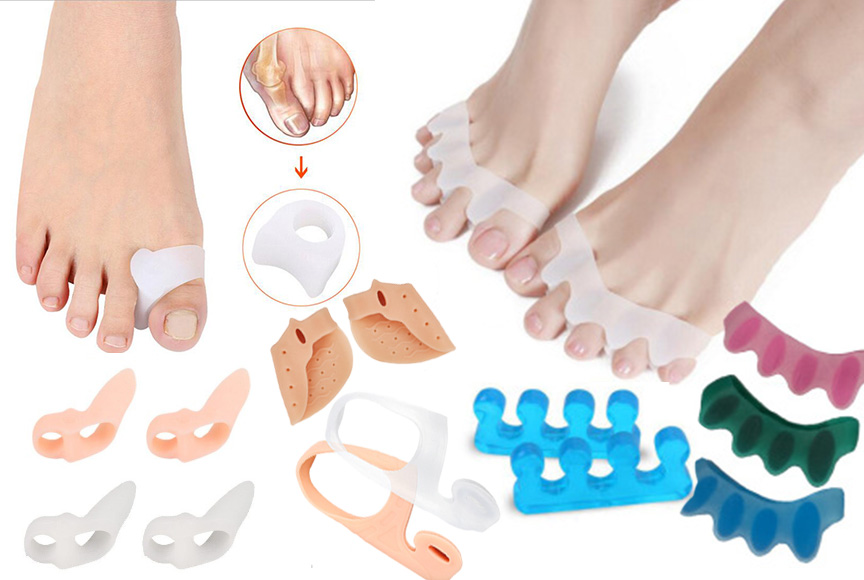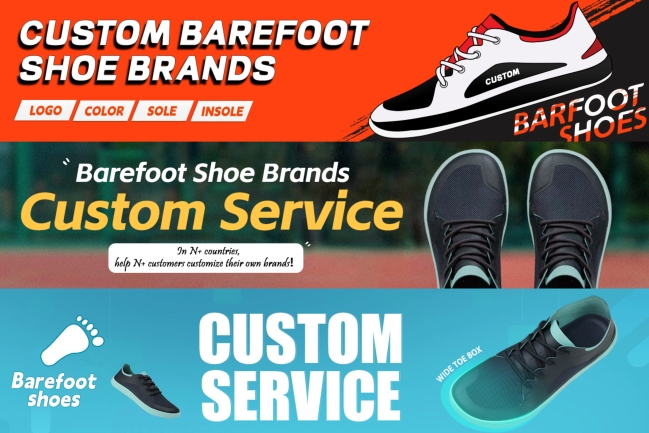
Switching to minimalist barefoot shoes can be a huge relief for your feet and great for your foot health… but only if you make the transition with caution.
While there may still be a lot of debate about minimalist barefoot shoes and the benefits of barefoot running, we are still strong supporters of both. So many of our customers have told us that their foot pain has disappeared and they no longer need orthotics to relieve their foot discomfort after switching to our minimalist barefoot shoes that it’s hard to ignore this feedback.
We often hear from people who are interested in minimalist barefoot shoes and want to try them for a variety of reasons. Some people want to go back to nature to treat foot pain, prevent future problems, and improve their overall health and balance. Others find that their feet need more freedom of movement while training in mainstream fitness systems such as MovNat or Crossfit.
Many people can’t wait to switch to minimalist barefoot shoes, but there are some things you need to know before throwing away your platform shoes.
Take Your Time!
The biggest mistake people make when switching to minimalist barefoot shoes is that they make the transition too quickly. If you’ve been walking in shoes with elevated heels, tapered toes, and thick soles with arch support for decades, the muscles, ligaments, and tendons in your foot have adapted to work in that specific way. Some of these muscles, ligaments, and tendons may not have been exercised enough and may be weak (one of the reasons why traditional shoes can cause foot pain). By hastily switching to minimalist barefoot shoes that use all of these foot muscles in a different way, your muscular system may not adapt, which may lead to muscle damage.
Even experienced runners can be at risk for stress fractures or other conditions if they skip the step of acclimating their feet to barefoot running before doing long distances. It’s like trying to run a marathon the next day after you’ve just taken off the cast on your broken leg. It’s not a good idea! If you get injured because you want to switch to minimalist barefoot shoes, you’re really going in the wrong direction.
Taking the time to properly develop those complex and delicate muscles will allow you to safely experience the benefits of natural foot health. If you’re like most of our clients, you may never want to wear traditional shoes again!
So, how do you do it? The process will vary depending on your purpose for wearing minimalist barefoot shoes, do you want to wear minimalist barefoot shoes for daily leisure activities, do you want to wear minimalist barefoot shoes for running, or do you want to do both? For this, we share some advice from experts in the field.
Treating Foot Problems Correctly
We are shoe manufacturers, not doctors, and we cannot give medical advice. However, we do have access to many articles written by doctors on foot health who believe that foot problems are best treated through natural healing rather than correction or surgery. We recommend wearing comfortable, natural shoes more often, but at the same time, you should also see a doctor in time to avoid serious foot diseases.
Transitioning to Minimalist Barefoot Shoes - Everyday Leisure
If your goal is to wear minimalist barefoot shoes in your daily life, which mainly includes walking, standing and sitting, then podiatrist and inventor of Correct Toes, Dr. Ray McClanahan, recommends the following two-month plan for a healthy transition to minimalist barefoot shoes:

The plan is basically that you need to start with one hour of minimalist barefoot shoes or one hour of barefoot walking every day. Each week, increase this time by one hour until you reach the eight-hour mark at the end of the two months. At that point, most people should be able to fully adapt to minimalist barefoot shoes without causing damage to their bodies.

Some people may be able to make this process faster, especially those who have already tried barefoot walking, but we still recommend erring on the side of caution. If you are experiencing some pain, it may be wise to slow down the transition. Look forward, you have a lifetime to maintain and enjoy foot health, so don’t rush it!
If you are looking to relieve foot pain, then incorporating Correct Toes into your minimalist barefoot shoe transition process can help. We’re big fans of this silicone toe separator, which can treat a variety of foot ailments by gradually restoring the deformed feet that have been worn out by wearing traditional shoes for so long.
Transitioning to Barefoot Running
Perhaps you’d like to take up a more professional physical training? Physiotherapist and barefoot running guru Michael Sandler has written a bestselling book on the subject called Barefoot Running. It has a lot of great tips for making the transition to barefoot running, including tips for improving your running form. This is important because not only is the type of shoe you wear changing, but your gait will also change, as you’ll likely go from heel-striking to forefoot-striking. For your foot health, follow Michael’s advice below:
1. On day one, start by running 200 meters barefoot or in barefoot shoes. This may not seem like much, but you’ll notice that your feet and calves are working a little—you’re doing heel raises every time you land on your toes, so to speak. If you’re sore, apply ice afterward.
2. Take a day off, then increase your barefoot (or minimalist barefoot) running distance by 100 meters every other day.
3. Run barefoot (or minimalist barefoot) only once every two days for the first three months. If you want to run more, you can wear your old shoes (or use orthotics) for the rest of your running time. As you gradually increase the time you are barefoot (or minimalist barefoot), you can gradually reduce the time you wear support shoes until you no longer need them.
4. If you feel pain, stop running immediately. Rest well and resume running after the injury heals.
It is worth mentioning that Michael also recommends that we start the transition directly from completely barefoot or wearing minimalist barefoot shoes to maximize the feedback from the foot (rather than wearing those “transitional” shoes with moderate shock absorption first), which can help your body respond to the barefoot state and make you step forward more lightly.
Hope this article is helpful to you. If you have other questions or want to know more about barefoot shoes, please leave us a message!


